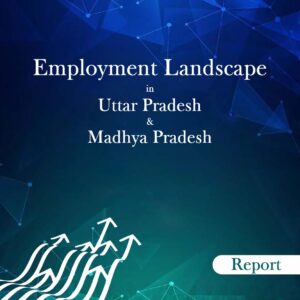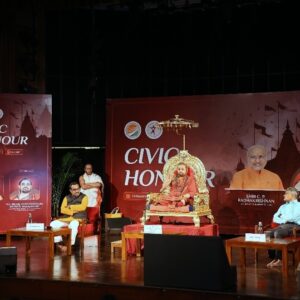It was in 2002 when India had its first brush with genetically modified crops. Monsanto, a global agribusiness giant, collaborated with Mahyco (Maharashtra Hybrid Seed Company, a Monsanto arm) to produce the first genetically modified cotton ‘Bollgard I’ approved for commercial cultivation, by the Genetic Engineering Approval Committee, GEAC (renamed now as the Genetic Engineering Appraisal Committee). I had then warned that the Bollgard seeds would fail in India in course of time. However, my views received vehement criticism from many Indian agricultural scientists, policymakers and farmers. Fail it did, some years down the line, and that too miserably, as seen by the cultivation of the Bollgard series in Punjab, Western Uttar Pradesh, and Rajasthan. The Bollgard cotton, engineered to withstand the devastating attack of the American Pink Bollworm succumbed to many other pests, notably, the whitefly, which devastated thousands of acres of GM cotton in Punjab, Western Uttar Pradesh and Rajasthan.
In August 2006, I was requested by the Centre for Sustainable Agriculture in Hyderabad following the observation of late Justice Y.K. Sabharwal, former Chief Justice of India, in response to a PIL on GM crops in the Supreme Court, that the entire question of GM crops be thoroughly investigated by a competent expert committee of capable scientist. I was appointed the Chairman of this Independent Expert Committee to examine the data submitted by Mahyco on Bt brinjal. This committee comprising of eminent plant nutritionists, physiologists, agronomists, entomologists, economists, farmer representatives and activists was constituted and I was chairing the proceedings of the committee, through meetings and teleconference, on the data submitted by Mahyco, on its field trials with Bt brinjal. We found several instances of a blatant breach of safety protocol by the company and the committee submitted its report to the Supreme Court in October 2006. Following this, Mr Jairam Ramesh, the then Minister of Forests and Environment in the UPA I government, had a country-wide meeting with farmers, activists and stakeholders on Bt brinjal. I wrote an open letter to the Minister, pleading him to ban the Bt brinjal, which was published in The New Indian Express on February 9, 2009. On February 10, 2009, the Minister imposed an indefinite moratorium on Bt brinjal, which stands valid to date.
The lesson we have to learn from the Bollgard fiasco and Bt brinjal controversy is that Indian agriculture should not be contaminated with the GM crops. GM technology is suited to vast stretches of monoculture land as in North America or Europe. While in India, except in states like Punjab in particular, and Western Uttar Pradesh, to some extent, where mono-cropping of either wheat or rice over the past decades—an offshoot of the high soil extractive farming, euphemistically known as the green revolution which took a heavy toll on soil and soil water—the rest of India practices the ecologically stable and environmentally safe mixed farming. We must take cognisance of the environmental havoc created by the green revolution to India’s soil resources, where there was unbridled use of chemical fertilisers, especially nitrogenous. Of the 328.73 million hectares (MHA) of geographical area in India, as much as 120.40 MHA are degraded, thanks to the green revolution, most of which is in Punjab state, due to monoculture of rice and wheat which the Punjab farmers propped up by unbridled fertiliser use of fertilisers like urea, which supply nitrogen to the rice or wheat crop. The groundwater is polluted, with heavy residues of chemicals, primarily nitrate residues from urea hydrolysis in soil, which is now no more potable. Another major hazard of the green revolution is my estimation that as much as 35% of global warming is contributed by the green revolution, because the nitrous oxide residue (N2O), a by-product of urea hydrolysis in soil, escapes into the atmosphere, which stays put and traps heat, leading to global warming. A molecule of N2O stays put in the atmosphere for nearly 350 years. This, in turn, captures the radiant heat and contributes to global warming. I initially made this observation in 1980 working in Germany when no one was willing to accept this finding, but now, research has shown it to be true.
My forthcoming book, Combating Global Warming – The Role of Crop Wild Relatives For Food Securitybeing launched during the global summit on global warming called by Mr Antonio Guterres, the United Nations Secretary-General, in New York clearly explains the scientific fallacies of the green revolution. It chronicles a revolutionary soil management technique, now globally known as ‘The Nutrient Buffer Power Concept‘, which has become the focus of global scientific attention. The concept is the outcome of more than three decades of my research in Europe, Africa and Asia. The Soils Department of The University of Kentucky, USA, has selected the concept as a benchmark for its ambitious, multi-million dollar soil fertility evaluation project for West Africa, funded by USAID (United States Aid for International Development).
The following example clearly illustrates how GM technology is being misused in India. There is a very popular saying in Hindi Makka ki roti aur sarson ka sag, which means bread made of maize (Makka) and the mustard side dish. Almost all the vegetarian dishes are cooked in mustard (Sarson) oil in Northern and Western India. Why suddenly has mustard oil taken centre stage? GM mustard has begun to stir both the scientific and activist lobbies, the latter vehemently against it, like the Bt brinjal. I give the example of DMH-11 developed by scientists of Delhi University, with the former Vice-Chancellor Dr Deepak Pental in the lead.
Why is the DMH-11, the “herbicide tolerant” mustard, which received the green signal from the Genetic Engineering Appraisal Committee dangerous? The WHO has labelled glyphosate as a carcinogen and there is incontrovertible field evidence from Argentina, which cultivates a lot of GM soybean, commercially known as Round-Up Ready soybean, that the glyphosate in the herbicide, Round-Up is cause for the birth defects of many children. The herbicide Round-Up, manufactured by Monsanto has glyphosate as its active ingredient, which has led to this human tragedy.
Taking a practical example, weeding is done by women farm labourers in mustard fields. Think of the loss of livelihood of these poor women. A conservative estimate shows that 25 per cent adoption of GM mustard in India would lead to the loss of a crore of employment days for these poor farm women labourers. Terminator technology (Genetic Use Restriction Technology, GURT for short, where GM plant makes its seeds sterile) in GM mustard is a potential threat to Indian farming, like Bt cotton which has been proved unsustainable in recent years. More pertinently, as mustard is an oil crop, there is great danger of mixing/contamination oils from GM mustard and non-GM crops.
A general comparison between a GM crop and a non GM crop is that, for example, if one considers the case of soybean, in the former the very toxic compound formaldehyde stays put, in the cells, while in the latter it is excreted. And, the more vexing question is that DMH-11 has not passed the rigorous biosafety tests as in the case of Bt brinjal cited earlier in the article, which the Independent Expert Committee had recommended to be stopped to the Supreme Court.
To sum up, GM technology, as of now, is unsuited to Indian farming. Until more rigorous biosafety tests are in place, none of the GM crops should receive the green signal, and, an indefinite moratorium should be in place, as in the case of Bt brinjal.
*The author is former Professor, National Science Foundation, The Royal Society, Belgium & Senior Fellow, Alexander von Humboldt Research Foundation, The Federal Republic of Germany.




